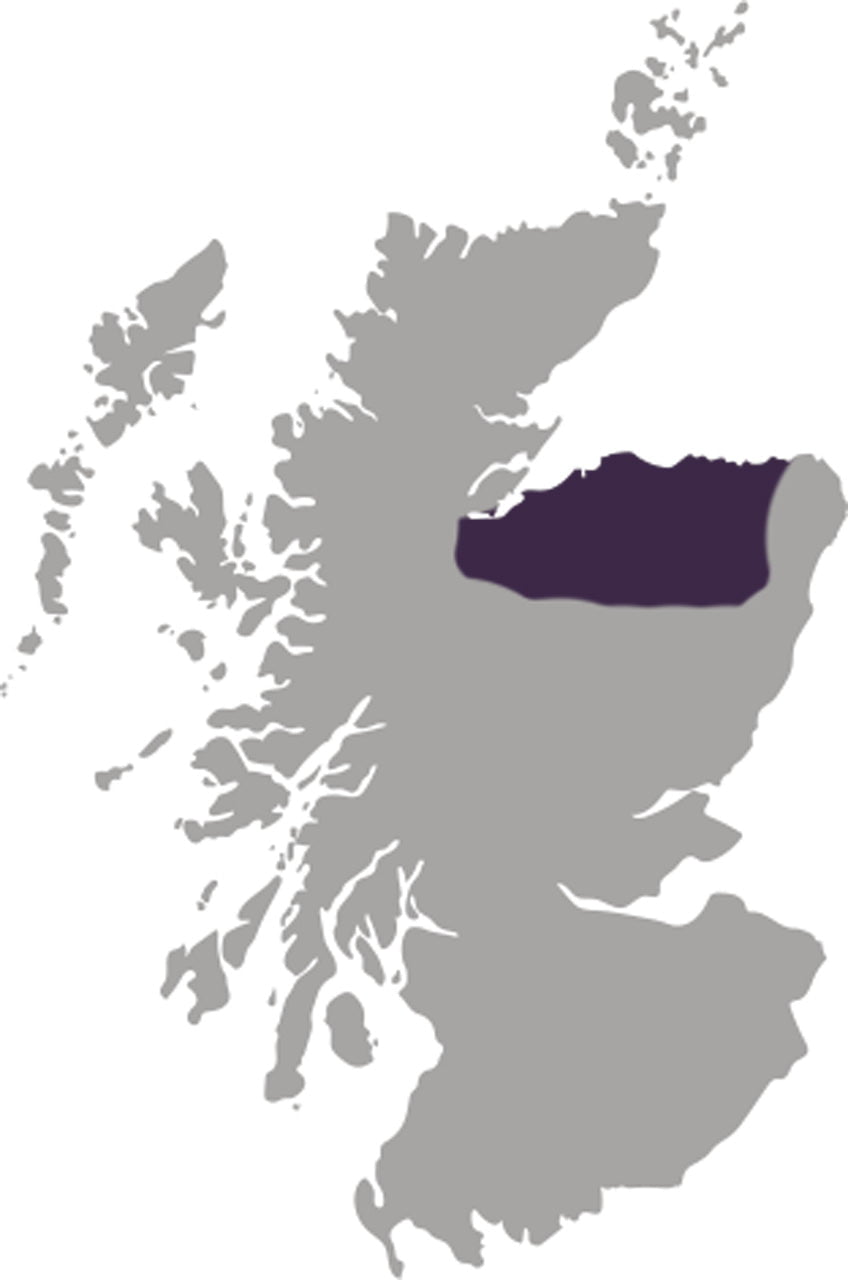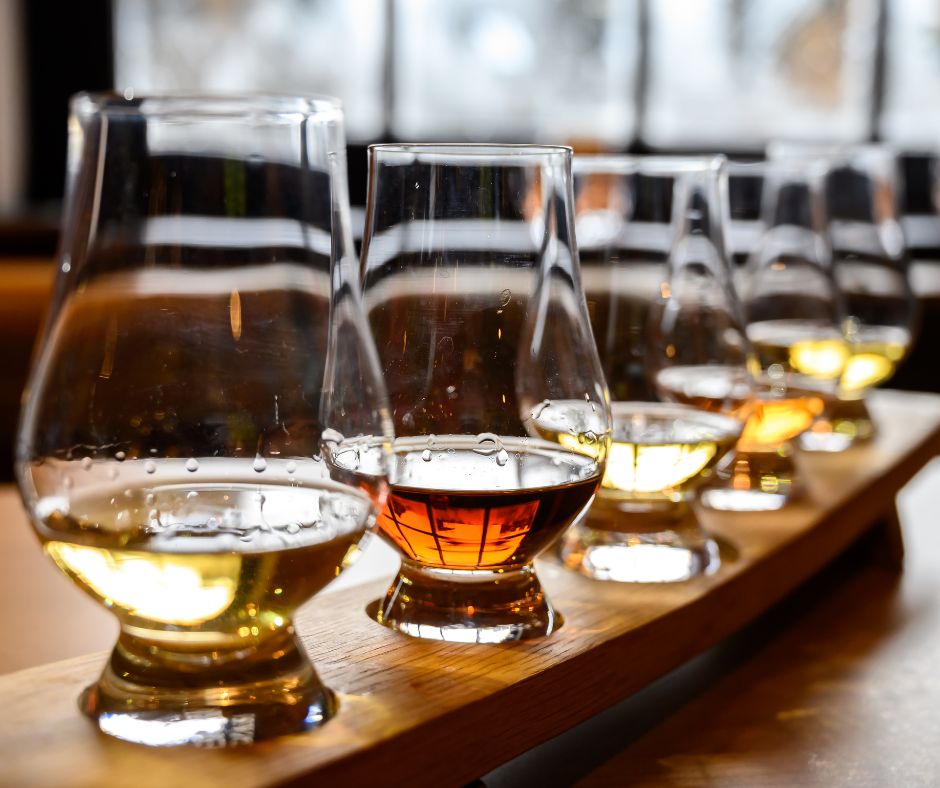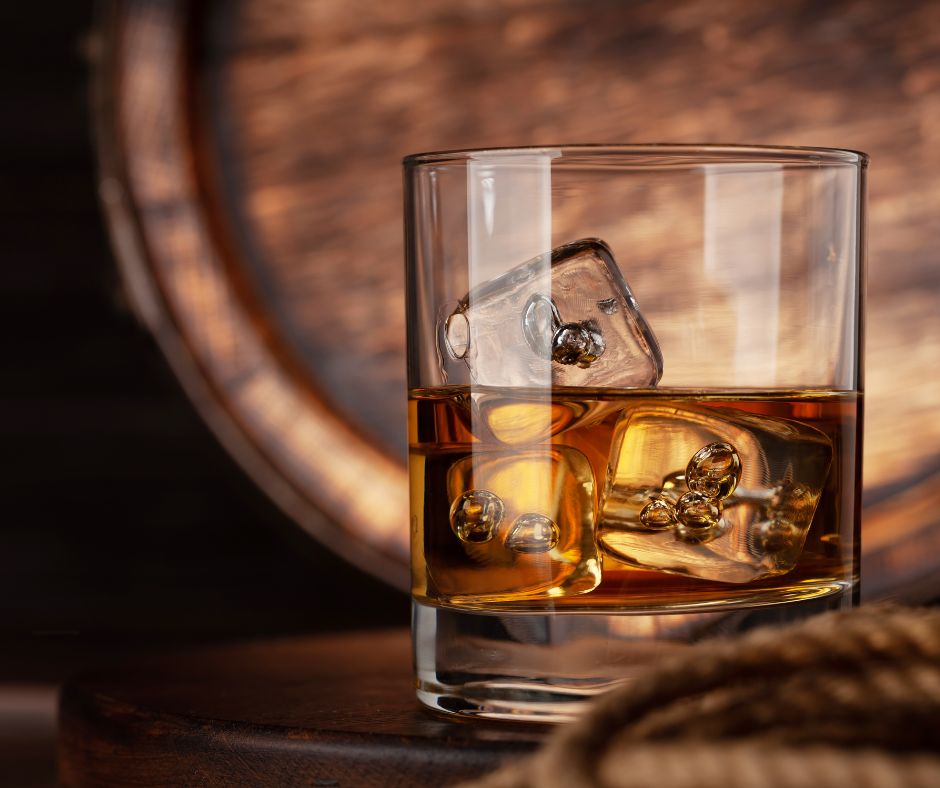What is Peated Whisky?
It used to be that all whisky produced in Scotland was peated – with a distinctly smoky taste and aroma - but nowadays peated whisky makes up only one particular taste profile of Scotch whisky.
Some really love it, others don’t. But what exactly is peated whisky and how is it made?
In this blog we’ll discover the origins, production process and taste profile of peated whisky, and explore the tiny Hebridean island that is world-famous for producing it.
But first…
What is Peat?
Peat is partially decayed organic matter, primarily made of plant material, formed over thousands of years in waterlogged environments of the Northern Hemisphere. It develops in ‘peat beds’ which are boggy areas where low oxygen levels slow down the decomposition process.
Whisky producers cut peat by hand from licensed peat beds, which can be between three and thirty feet deep, and dry the bricks out for approximately three months. They are then used as a fuel source for the kiln during the malting process of barley.
What is Peated Whisky?
Peated whisky is any whisky made from malted barley which has been dried over a peat fire.
The Origins of Peated Whisky
Peated whisky’s historical roots are in Scotland, where for centuries peat was used as a readily available fuel source to heat homes.
In the early days of whisky production, a peat fire was the only means of drying malted barley, which led to the development of this distinctive style.
How is Peat used in Whisky Production?
When peat is burned, it gives off only a little heat, but a lot of smoke.
So, when malted barley is dried by peat fire, it fully absorbs the distinct phenolic compounds from the smoke, imparting the characteristic smoky aromas and flavour to the whisky.
Peat and Environmental Impact
The Scotch whisky industry retrieves peat from the beds at a far lower rate than it’s created, but the practice of peat extraction is not without controversy.
Peat extraction can disrupt fragile ecosystems and release carbon into the atmosphere, so whisky makers are increasingly embracing sustainable practices and supporting conservation efforts to protect peatland and mitigate their environmental impact.
Many producers are working with the Scotch Whisky Association and Peatland Action on restoration initiatives at their extraction sites, which involve returning degraded peatlands to a more natural and functional state.
Where is Peated Whisky Made?
Peated whisky is made all over Scotland but Islay, off of the west coast of Scotland, is world-famous for producing whisky with smoky, briny, medicinal notes, and has developed a reputation for making some of the smokiest and most intense whiskies in the world!
Currently home to ten distilleries, Islay boasts a rich history of whisky-making that dates back centuries. The island’s unique combination of fertile land, abundant peat beds, and pure water sources creates the perfect conditions for crafting distinctively smoky whisky.
Other Regions
Throughout the rest of Scotland, regions like Speyside and the Highlands also produce peated whisky with a milder peat influence compared to Islay. The peated whisky from these regions is often less medicinal and more earthy and woody, as the peat used to dry the barley originated from ancient Caledonian forests.
Other whisky-producing countries like Japan, the U.S. and Ireland also produce peated whiskies in a limited amount.
What Does Peated Whisky Taste Like?
It is often said that peated whisky tastes like campfire in a glass!
However, it’s often officially described as smoky, earthy, and often medicinal. When you nose a glass of peated whisky, you may catch notes of wood smoke, brine, and seaweed.
The PPM Scale
Parts per million (PPM) measures the phenol content of whisky, indicating its peatiness. Generally, the higher the PPM, the peatier the flavour. Bruichladdich’s Octomore 8.3 holds the record with an incredible 309.01, while most peated whiskies produced today sit somewhere between 20 and 90.
Producers don’t always include the PPM level on the label, but with a bit of digging you can usually find out where your peated whisky sits on the scale.
Still Spirit’s Peated Whisky Picks
We sell a range of peated whisky from all over the five whisky-producing regions of Scotland. Here are some of our top picks:
Laphroaig
Laphroaig is world-renowned for producing single malt whiskies with medicinal notes, intense smokiness and an iodine tang. Rather unusually, Laphroaig infuses its barley with peat smoke before and after the drying process.
One to try: Laphroaig 10-Year-Old is a whisky with a bold peat character harmonising with layers of seaweed, salt and a touch of sweet vanilla.
Bruichladdich
Octomore, produced at the Bruichladdich Distillery is widely known for its super-heavily-peated whiskies. Releases, often numbered by PPM, are bottled close to cask strength.
One to try: Octomore Edition 14.1, matured for five years in first-fill American oak, is packed with notes of smoked heather, coffee and earthy peat, followed by a long smoky oak finish. This is one for the peated whisky enthusiasts at a PPM of 128.9.
Lagavulin
Lagavulin produces world-famous single malt whisky that balances a refined peaty smokiness with earthy undertones and a subtle hint of iodine, resulting in a distinctively coastal influence.
One to try: Lagavulin’s 16-Year-Old, is a revered classic loved by peated whisky enthusiasts the world over. It balances a rich, smoky core with notes of dried fruit, caramel and a lingering briny finish.
Tobermory
Tobermory Distillery, situated on the Isle of Mull, produces both peated and unpeated whisky under two distinct brands, Tobermory and Ledaig. Established in 1798, it is one of the oldest commercial distilleries in Scotland.
One to try: Ledaig 18-Year-Old, an award-winning single malt whisky with notes of barbecue, orange peel, fruit and sweet sherry.
Each peated whisky has a story to tell.
As a geographical time-capsule, peat captures the essence of the landscape that forms it, contributing significantly to the flavour profile of peated whisky.
Whether you’re a peated whisky lover or a complete new-comer, understanding the origins, regions and tasting notes of peated whisky will further your knowledge of this unique genre, and connect you to the rich history of Scotland’s whisky-making tradition.









